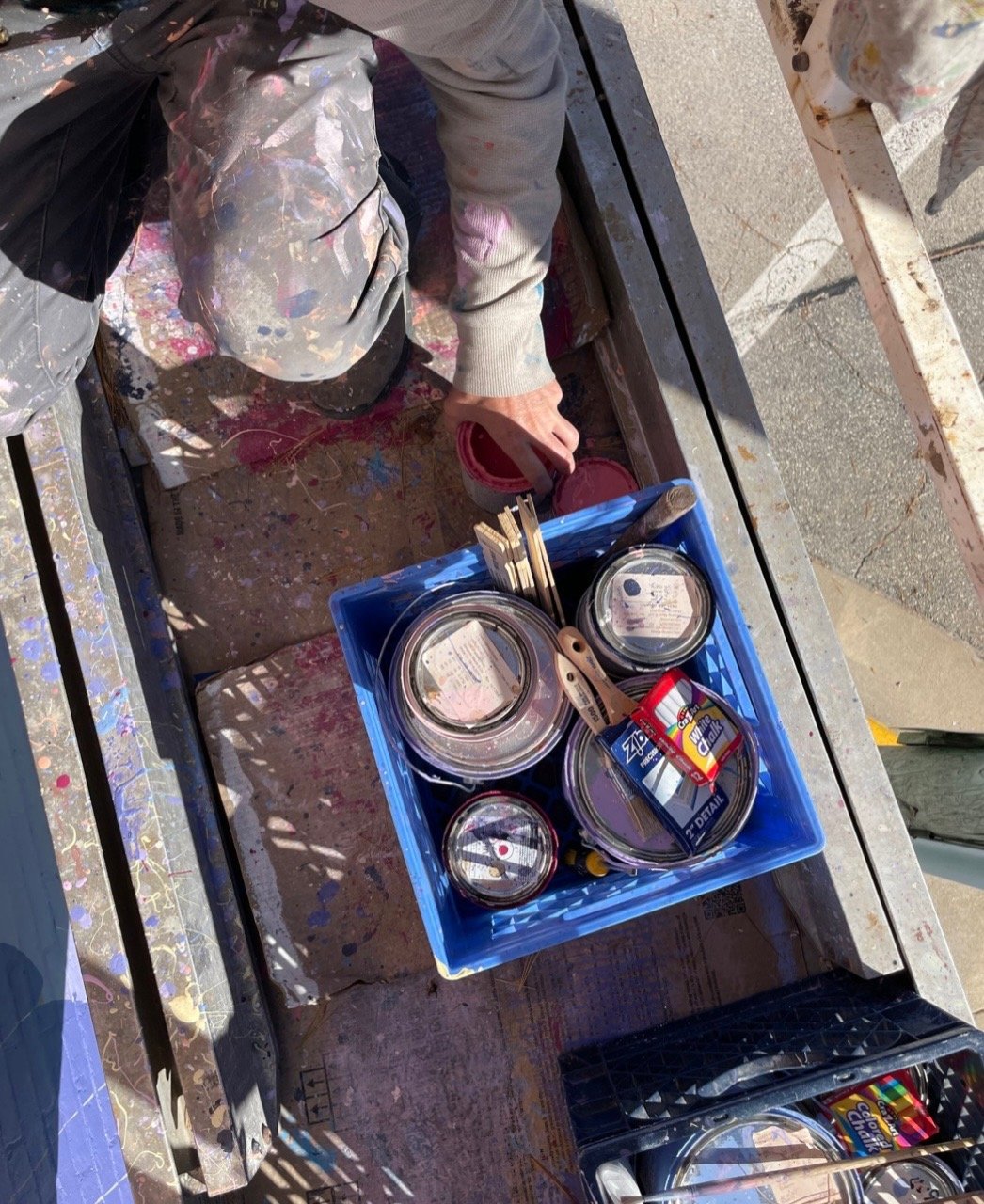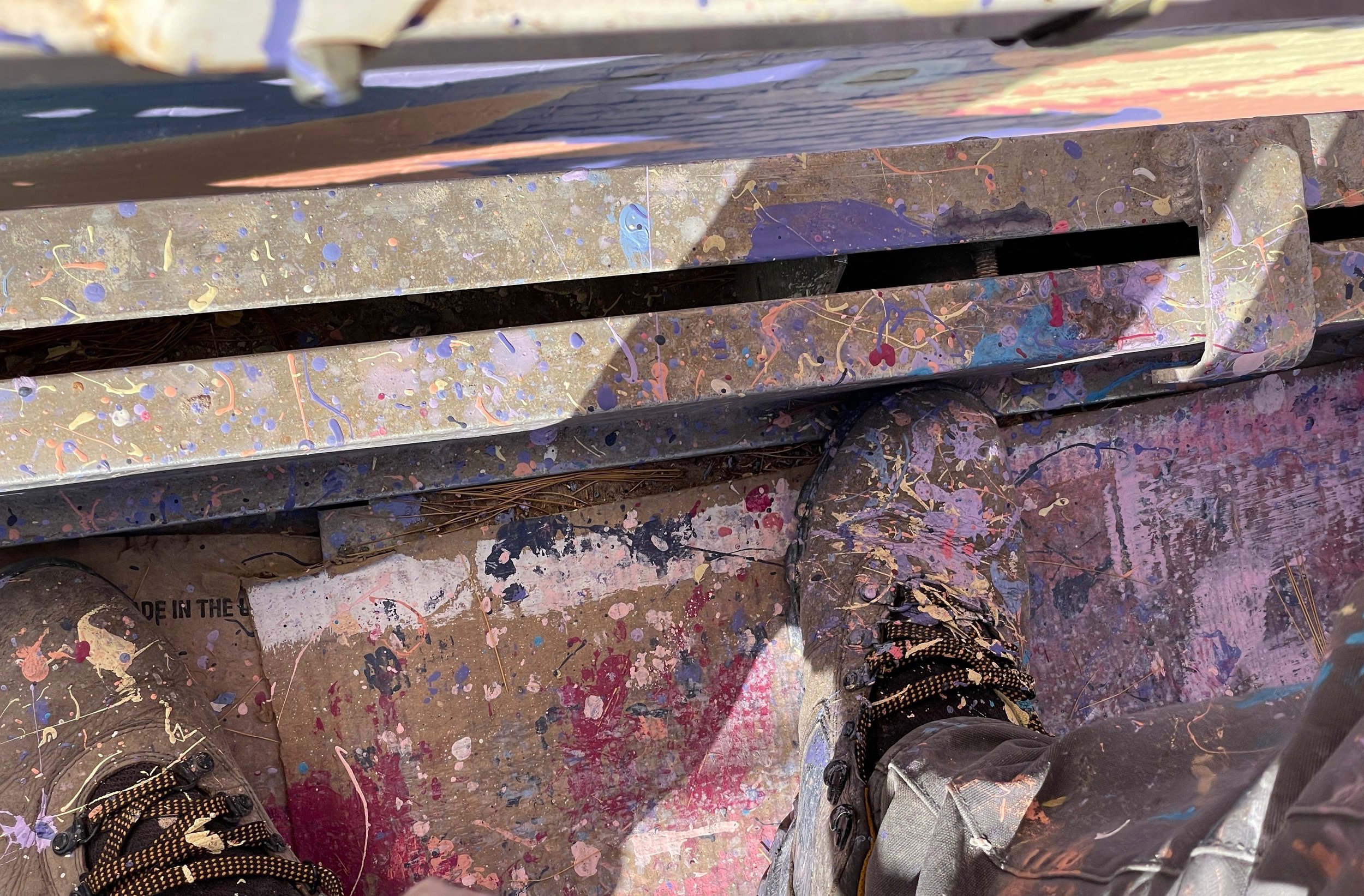Nick Goettling Crane Mural
“Seeing this growing community of passionate, highly capable people who cooperate to make cool things was really inspiring to me, and to my artist friends who visited. One was a little apprehensive to visit, not knowing if the small rural towns would be diverse enough to feel welcoming. Those concerns evaporated immediately once they arrived, and they had a great time exploring. He and his partner felt totally at home within the highly inclusive and friendly community here.”
“Last week I started the long, long, long drive from Washington state to Princeton, Wisconsin to paint a two-part mural that I'd originally begun late last fall. An old artist friend and I were scheduled to meet there, too. As per road-trip habit, my halfway-point stop was in the ghost-town of Cisco, Utah, where that same friend had created a bizarre and inspiring artist colony from the rusty dusty scraps of an abandoned railroad town. It eventually folded to the forces of venture capital and code compliance, but it was a very special place for a huge tribe of creative folks. I miss it. But when I first rolled in to the little rural town of Princeton, I was shocked to see the same spirit reincarnated and thriving.
Between Denver and Wisconsin lies the Great American Corn Sea, and (with respect to those residents,) it is punishingly boring for 1000 miles. I lived in Chicago for a long time, and loved it, but the Midwest landscape was not the main attraction. I've been accused of being a nature-snob, having grown up in the Puget Sound of Washington State and spoiled rotten with natural beauty and variety. So the rolling hills, giant trees, huge sky, and abundant birds in Wisconsin are a huge relief. My Chicago friends used to come up here to get out of the urban sprawl, and it was great to discover this stunning new oasis. The landscape here makes you really want to meander through it, hiking and exploring back roads and river bends. Watch out for the Amish buggies, stop to take a look at the birds at sunset, and have your lunch by a creek.
The character of Princeton is great, and something we don't have in the Pacific Northwest. The buildings are as beautiful as they are old, having been built in the 1800's beside the Fox river. The present Princeton renaissance is immediately evident, starting at the veggie-forward Horseradish restaurant and continuing down to the Parlor Hotel and Twister boutique and coffee shop. Between those are a delicious BBQ joint, an outstanding bakery (the blue cheese butter spread on focaccia became my vice,) a natural wine shop, and a few antique or craft shops, and even a tiny bowling alley. All the restaurants have patios above the river, looking out over the beautiful marshlands and bird sanctuary. It's a beautiful place to read, draw, or catch up with friends.
The community synergy there was very impressive, and was the most supportive that I've ever experienced in my twelve years of creating public art projects. The town donated an expensive scissor-lift, organized volunteer work parties to prep the wall, and hosted pop-up dinners and a fundraiser dance party. The owners of the boutique hotel are also connected to the local Princeton Art Collective (PARC,) and were able to host me in an outstanding hotel suite as the first of many Artists In Residence. The Parlor hotel is an impressive, rich place to cultivate inspiration and creative exploration. The space makes you want to sit in every chair in the building to fully appreciate the personality of each little curated corner. The hotel could become a key setting for a great novel.
Seeing this growing community of passionate, highly capable people who cooperate to make cool things was really inspiring to me, and to my artist friends who visited. One was a little apprehensive to visit, not knowing if the small rural towns would be diverse enough to feel welcoming. Those concerns evaporated immediately once they arrived, and they had a great time exploring. He and his partner felt totally at home within the highly inclusive and friendly community here.
The artist residency felt like a fulfilling vacation as much as a well-supported creative endeavor. Every creative person should know about Princeton, Wisconsin. It wasn't on my map until recently, but I'm very happy that it is now. It's hard to find thriving creative communities are precious, and must be nurtured. The work that's happening in Princeton is a creative person's dream, and anyone who passes through is excited to see what they do next.”
~Nick~















